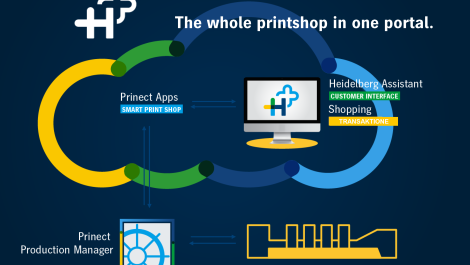Industrial Inkjet Limited in Cambridge is at the forefront of developments in its field, developing inkjet solutions across a broad range of applications.
The vastness of inkjet technology’s usability – especially for industrial applications – quickly becomes apparent after a short period of time spent at Industrial Inkjet Limited’s facility in the UK’s ‘heartland of inkjet’ of Cambridge (more than a dozen inkjet related companies operate in the city and its environs).
Labels, flexible packaging, product decoration, security printing, ceramics, textiles, wall and floor coverings, coding and marking, printed electronics, material deposition, direct mail/transpromo – all are mentioned, all enjoying (or otherwise) different stages of maturity and vibrancy as an inkjet application.
The company’s technology, based on Konica Minolta print heads (for which it also undertakes sales and technical support outside of Asia), already does or will extend across all of these areas. The business model incorporates selling or integrating inkjet heads and peripherals such as ink systems, electronics and mounts to the heads, to OEMs, as well as print engines (in direct to print, belt and roll to roll configurations) to machine builders and integrators.
‘For most of what we do, no machine exists,’ explained managing director John Corrall, who founded the business in 2005. ‘There’s no off-the-shelf system and they are looking for someone that is prepared to do a lot of work to create something to match their needs. When Konica Minolta asked us to set up the company they wanted people with a breadth of knowledge, able to both design the machines and to go and service them.’
To get any inkjet system working, a balance of the right print heads, inks, and possibly pre- and post-treatment are all required. This requires a huge amount of testing – the hard yards that Mr Corrall alludes to – and as always the deciding factor is economics. ‘That tends to make most markets all about short run, variable information. With those kinds of enquiries, inkjet will fly. If not, it won’t,’ he said.
Though Industrial Inkjet (IIJ) puts together both mono and colour inkjet systems, Mr Corrall has strong views on the relative usefulness of these in certain applications, specifically label printing. He stated: ‘We have tried to sell into full colour inkjet for a number of years and we’ve realised that people like Durst and Domino are barking up the wrong tree a bit. Why? Look at the sales of even the market-leading colour inkjet: it’s less than 200 systems in six years. The next closest is about 60; another has sold half a dozen. Single colour systems are in the thousands though. We don’t think anyone is making any money with colour inkjet in labels.’
There will be a market for colour labels, he added, and it will boom, but not with current technology. ‘There’s technology down the road that has got high quality (1200 dpi), and high speeds (80 to 100 metres per minute) but the cost has got to come down. If a machine is half a million pounds, people will shy away from it.’
The fastest growing market for IIJ is currently security printing, which is mostly mono, while flexible packaging is next on the agenda. This will require wider inkjet head arrays, with the market typically starting at about the 500 mm that is usually the maximum for labels. The company is developing a 2.2 metre-wide colour bar that will be useful for flexible packaging, as well as sectors such as HPL (High Pressure Laminate), wallpaper, and vinyl flooring.
Textile printing is booming and inkjet is starting to get a share of this, but the window of opportunity in Europe is very often fairly short before production moves to China. An example has been ceramics, said Mr Corrall: ‘It suddenly went through the roof, but in about three and a half years it was saturated, every producer in Europe had a machine. Now the big push is in other parts of the world. So inkjet for ceramics in Europe has been and gone.’
With a more commercial print twist is the direct mail and transpromo market, where inkjet systems such as Kodak’s Prosper are being used in hybrid configurations to add variable elements to litho printed shells. The main issues for IIJ in tackling this market have been print resolution and speed, with 600 dpi heads only recently introduced, and 80 metres per minute being a comfortable speed.
‘We think we are okay for 160 per minute, but if you want more than that we are not really there. There is probably a market opportunity there that has not been tested,’ said Mr Corrall.





